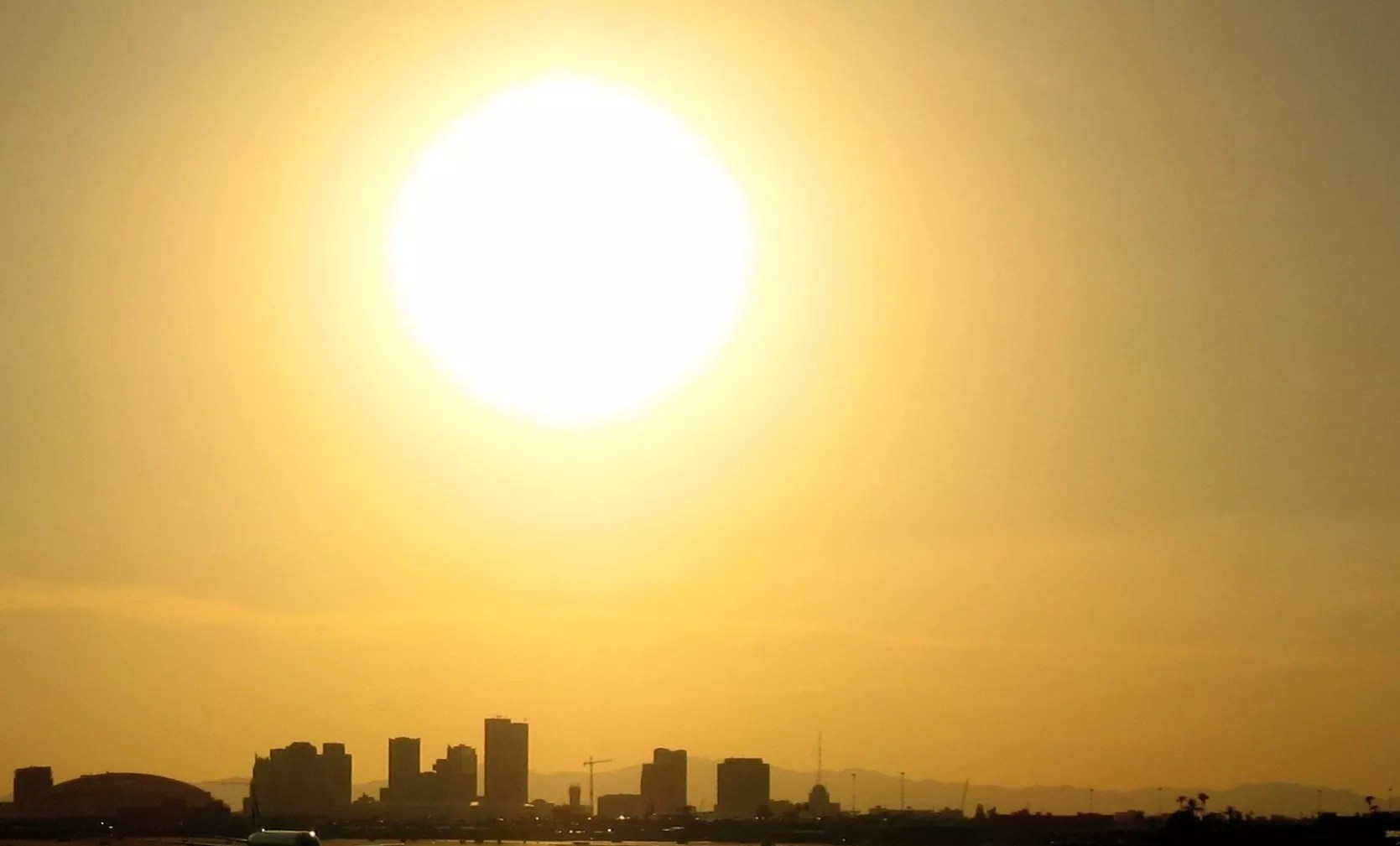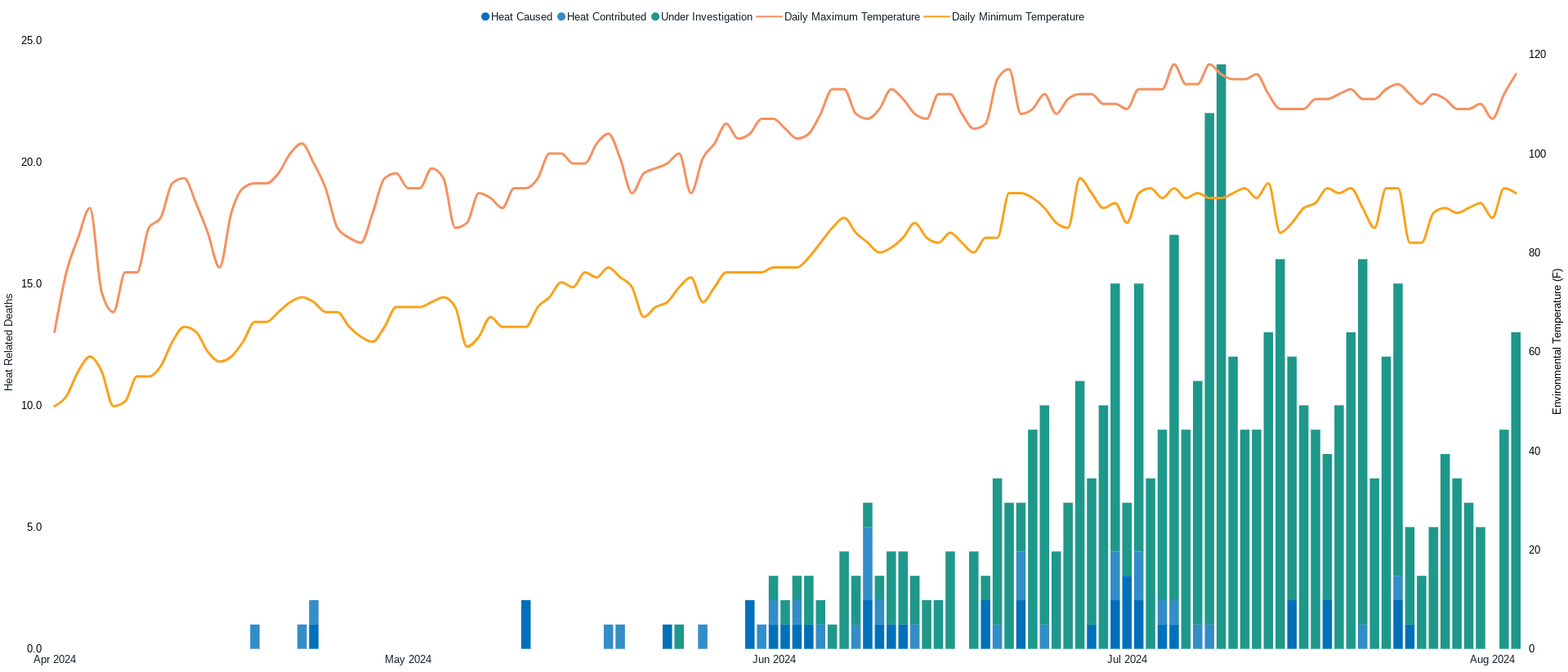

Audio By Carbonatix
The Valley’s brutal summer heat has caused or contributed to 66 confirmed deaths so far this year, according to Maricopa County’s public health department.
But don’t be fooled – those are just the heat deaths about which officials are certain. At least 447 other deaths are under investigation as of Sunday, meaning the current death total could 513 or more when the dust settles.
If last year provides any clues, the toll could climb even higher than that. At this point in 2023, there were 59 confirmed deaths and 345 under investigation. But the final tally revised that upward to 490 heat deaths through last July, according to the Maricopa County Department of Public Health’s heat surveillance dashboard.

A graph of confirmed and suspected heat deaths in Maricopa County in 2024.
Maricopa County Department of Public Health
This year, make your gift count –
Invest in local news that matters.
Our work is funded by readers like you who make voluntary gifts because they value our work and want to see it continue. Make a contribution today to help us reach our $30,000 goal!
Last year was by far the worst year on record for heat deaths: 645 people in Maricopa County died from complications, making heat the 10th most common killer in Arizona. It was an enormous increase from 425 deaths in 2022.
A historic heat wave suffocated the Valley last July, with highs topping 110 degrees for 31 straight days. Officials seemed caught off guard and unprepared for the fallout. Gov. Katie Hobbs declared a state of emergency 12 days after the hot spell ended.
At the city, county and state levels, officials adopted a few new policies and measures in an attempt to keep so many people from dying in 2024. Phoenix officials expanded the operating hours at cooling centers, where people in need of relief from the heat can shelter. Two cooling centers were turned into overnight facilities. But even the expanded cooling centers face a long-term challenge: They use funding from the American Rescue Plan of 2021, which will dry up come next summer.
Hobbs also hired the state’s first chief heat officer, Dr. Eugene Livar. However, Livar drew criticism from ABC 15 reporter Nicole Grigg for repeatedly dodging interview requests and only taking questions from the press via pre-recorded videos. After public outcry, Livar sat down with ABC 15 for an interview that aired Monday and said it will “take a few years” to solve the issues that are leading to an increase in heat deaths.
It certainly doesn’t seem to be solved in 2024. This summer’s heat death figures suggested the county and city’s efforts have not slowed the death toll.
Unsurprisingly, the unhoused community accounted for a large portion of last year’s heat deaths: 46% were unhoused, while unhoused people account for less than 1% of the county’s population. This year, the heat is hitting unhoused people especially hard. Data shows that half of those confirmed to have suffered heat-related deaths this year were unhoused people. Yet, only 11.7% of hospital visits related to heat were from unhoused people.
“Quite honestly, the root cause is we have not been dealing with affordable housing and homelessness,” Will Humble, executive director of the nonprofit Arizona Public Health Association, told Phoenix New Times in May. “That’s where the bodies came from.”
Maricopa County and its cities, particularly Phoenix, have struggled to contain the challenges of a growing homeless population. Housing in Phoenix is unaffordable for a large portion of the population, and evictions continue to climb, hovering near January’s record high. As a result, the number of unhoused people in metro Phoenix has risen sharply since 2018, jumping from about 6,300 to nearly 10,000 this year, according to an annual count conducted in January.
Both heat death figures and temperatures show that last summer wasn’t an outlier. Phoenix is getting warmer. This June was the hottest one ever registered in the Valley, and July was the second-hottest one on record after July 2023.
Summer temperatures keep going up. The numbers show that Maricopa County will have to do a lot more to keep heat deaths from rising, too.